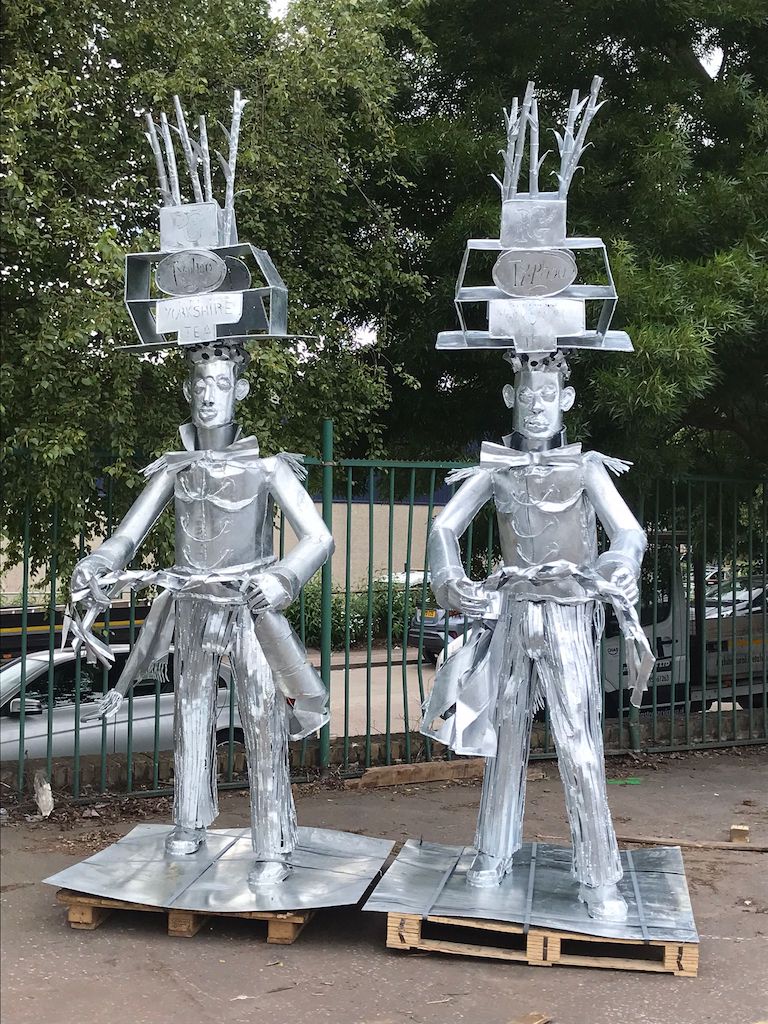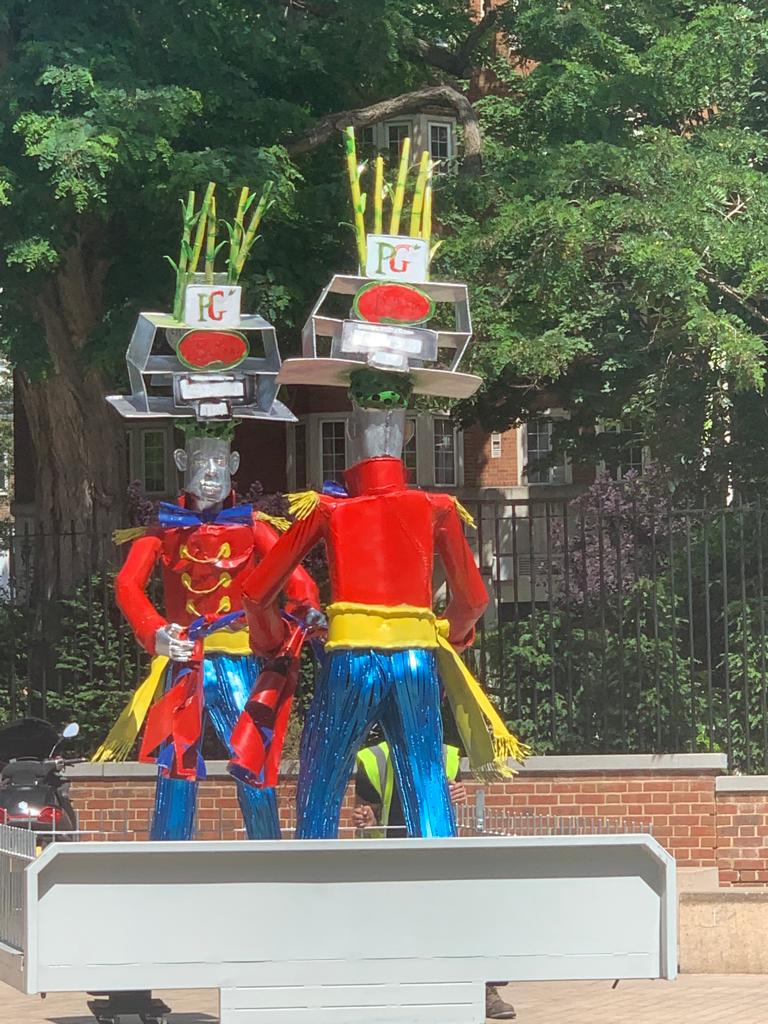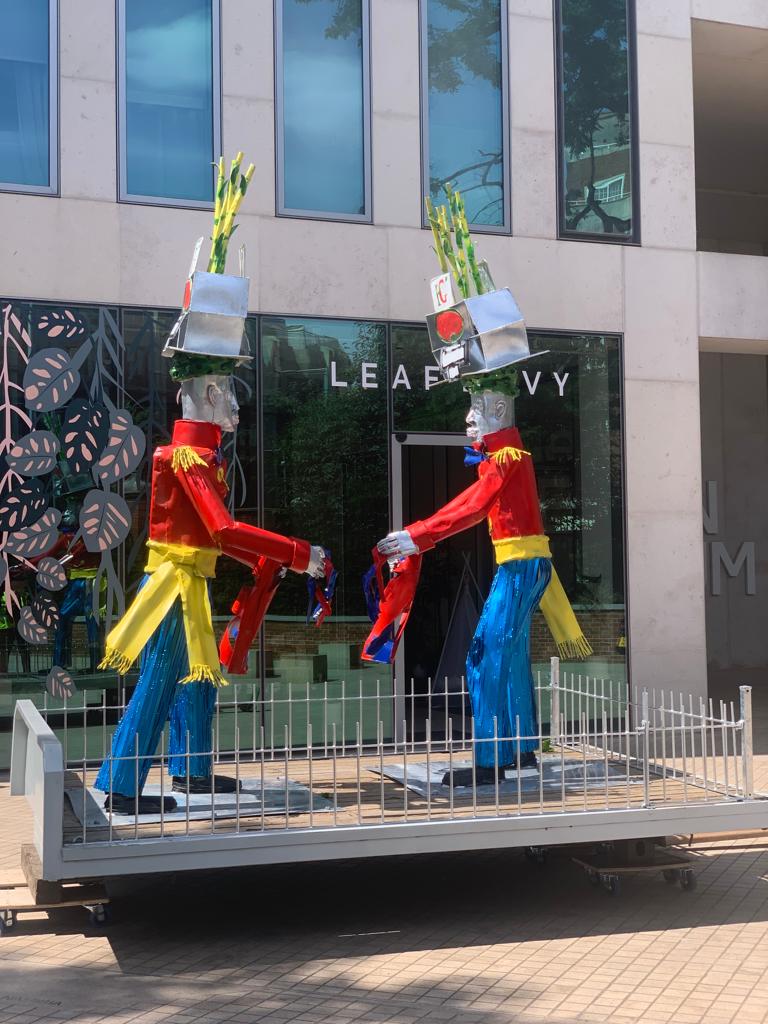Celebrating the heritage of Carnival and Jonkonnu
Sokari Douglas Camp applauds the Carnival spirit with hot dip galvanized steel sculptures
With London’s most famous carnival taking over Notting Hill next month, we’re showcasing a new art installation by acclaimed artist Sokari Douglas Camp, CBE.
Born in Nigeria and based in London, Sokari has exhibitions worldwide, including at the Smithsonian and the British Museum. One of her most recent was part of Kensington and Chelsea Art Week.
The artwork is a hot dip galvanized steel sculpture of two vibrantly dressed, life-size characters with ornate headgear.
The characters represent key themes:
- Kalabari masquerades from the Nigerian coastal region where Sokari was born.
- The vitality and spirit of the Notting Hill Carnival bouncing back after COVID.
- Jonkonnu revellers in Jamaica in the late 1830s.
Sokari was inspired to create the two characters after researching the origins of the Notting Hill Carnival during lockdown and seeing some Jonkonnu lithographs by Isaac Mendes Belisario.
Jonkonnu was a festival practised during slavery in the Caribbean when plantation workers were allowed a few days off. They celebrated with “exuberant musical masquerades that recalled their African heritage”. (Source)
Sokari saw positivity in the Jonkonnu festivals because even in times of adversity, the revellers danced, sang, showed resilience, and celebrated their heritage.
Likening this to the return of the Notting Hill Carnival after it disappeared during COVID, Sokari had faith that the carnival spirit lives on.
The costumes may have changed since the 1830s – fewer sailors and petticoats, more tiny outfits, lycra and birds of paradise feathered headgear – but celebrating heritage using dance, music, and costumes remains.
Finding ‘good’ in the ‘bad’
Another theme that Sokari explored when creating these sculptures is the notion of ‘finding good in the bad’. When you look at the photos, you’ll see ornate headgear on the two characters featuring tea and sugar cane. With these references, Sokari wants to remind us that Caribbean and African slaves had harsh lives on tea and sugar cane plantations. And yet there’s a dichotomy to this, as tea is often soothing, and sugar is sweet. We should never forget there are many layers of heritage.
_________________________
The making of the sculptures
Sokari made the Jonkonnu sculptures in her Elephant & Castle, London studio by welding, cutting, and bending steel. Joseph Ash Medway – a supplier to Sokari for 15 years – hot dip galvanized the steel to give it a protective coating.

Sokari then covered the sculptures with vibrant coloured car spray back in her studio.
She had just one month to pull the whole project together! But she succeeded.
_______________________
If you’d like to see the Jonkonnu sculptures, they will be outside the Design Museum in London until 30 August 2022, and as part of an exhibit at The October Gallery until 23 July 2022. Sokari is also exhibiting at the V&A until May 2023
To read more about Sokari and her works, visit her website.
To immerse yourself in Carnival heritage, visit Notting Hill from 27-29 August 2022.

